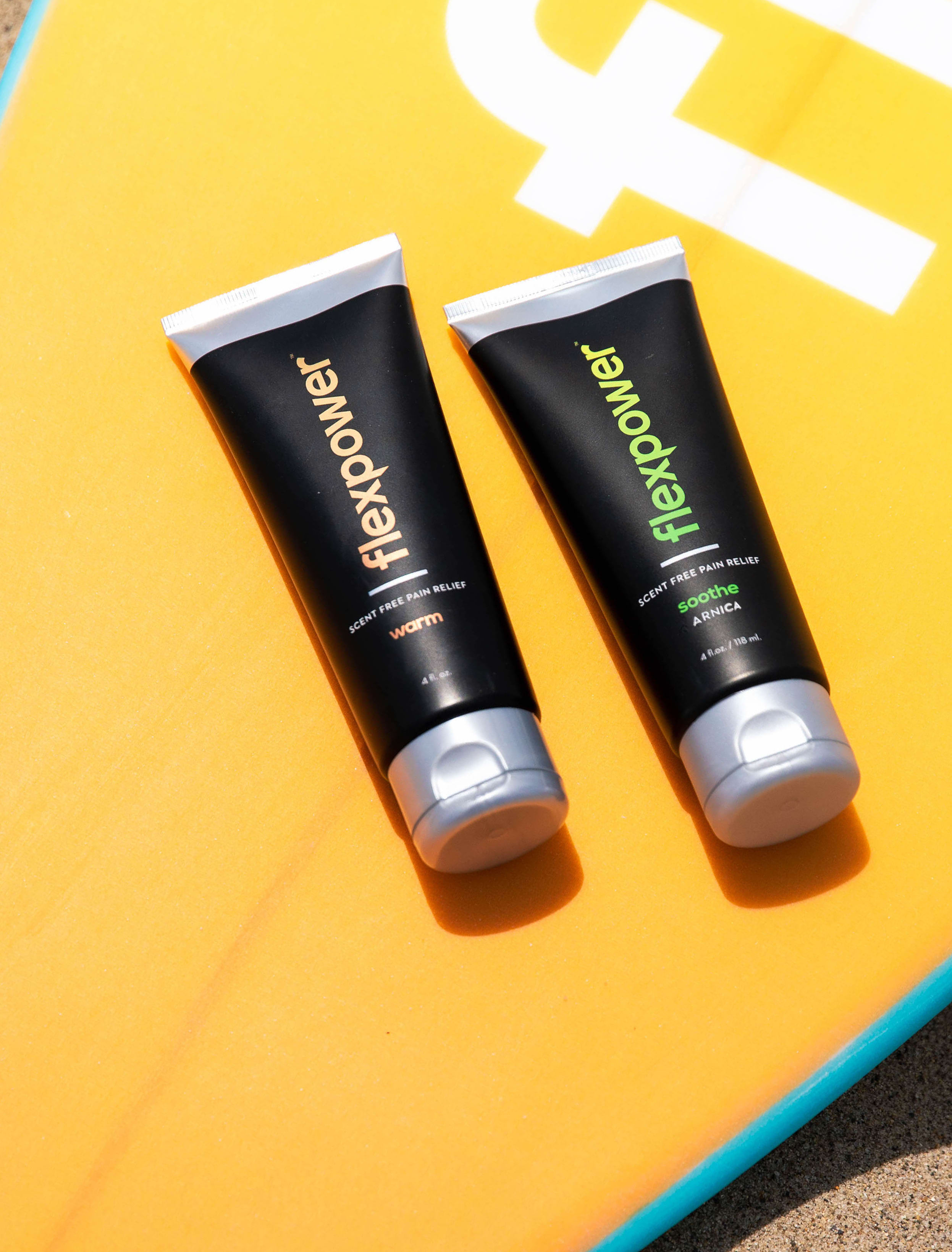
Should You Heat or Cool Sore Muscles?
Flexpower Fitness - Before you get moving, you might have some questions. We're here to do what we can to help.
We know muscle soreness. We’ve felt it, powered through it, and built our brand around getting rid of it . But beyond applying Flexpower Warm, what else can you do? Well, a lot of that depends on what exactly the problem is.
When deciding whether to use heat or cold to treat your muscle injury, you should determine whether you have an acute or chronic problem. The difference is that acute pain usually comes on rapidly, but tends to be short-lived. It also usually develops immediately or within hours of an injury. Chronic pain develops slowly over time and tends to be persistent and long-lasting. Sometimes, chronic pain is the result of not immediately treating acute injuries.
When to Ice

You usually want to go cold when dealing with an acute injury.
Placing an ice pack on an acute injury immediately helps to reduce pain and swelling because ice is a vasoconstrictor – that means it causes your blood vessels to narrow and reduces internal bleeding at the original site of the injury.
To treat your injury with cold therapy, it’s recommended to hold an ice pack or ice cubes wrapped in a towel to your skin for approximately 10 minutes at a time. You can repeat this process after you have allowed enough time for your skin temperature to return to normal. It’s fine to apply an ice pack several times a day for up to three days after your injury.
If you typically have a “problem area” like a bad knee, icing it immediately after intense exercise can help prevent acute pain before it starts.
When to Warm

Heat is ideal to treat chronic injuries that do not involve inflammation or swelling. It helps to reduce the pain associated with stiff and sore muscles and joints.
Placing a heat pack on sore muscles before exercising can reduce pain because heat stimulates blood flow and increases the elasticity of the connective tissues in your joints. Additionally, heat can stop a muscle spasm and relax muscles that feel too tight.
The reason you shouldn’t apply heat to acute injuries with symptoms of inflammation (like a sprained ankle) is that heat raises your skin temperature and increases your circulation.
You can safely use a heat pack on your skin for approximately 15 minutes. Just be sure to have enough of a layer between the heat pack and your skin so you don’t accidentally burn yourself.
Moist heat tends to work the best. If you can, use a hot, wet towel.

